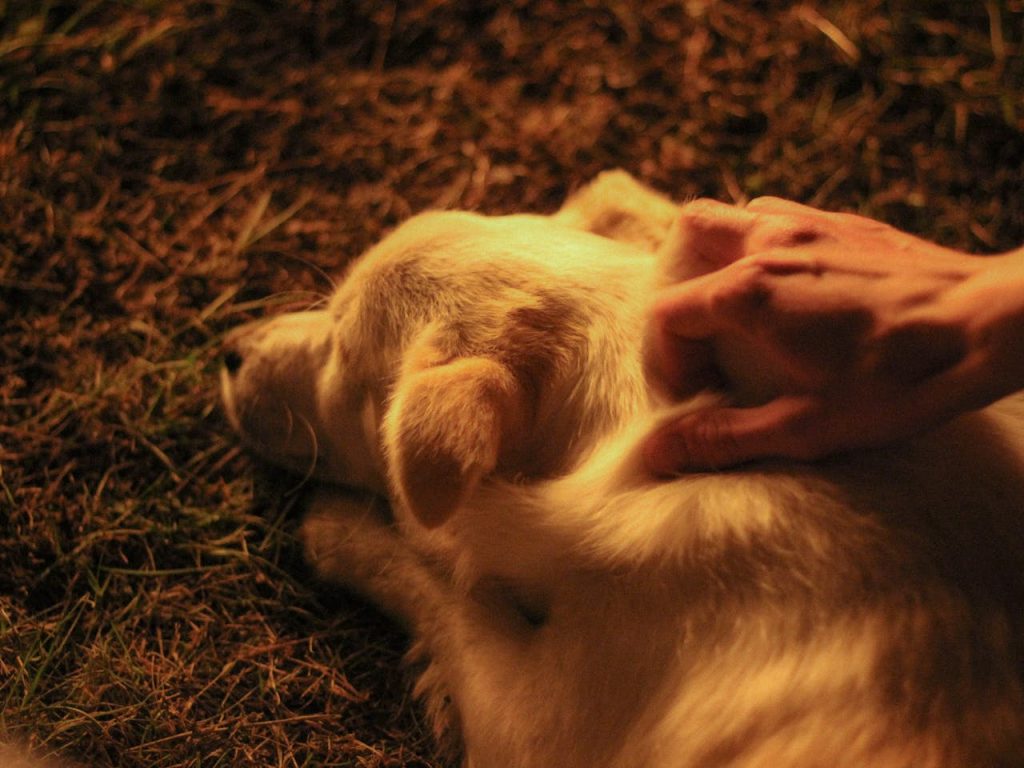
15 Ways to Calm Dog Anxiety at Night in an Apartment
If your dog struggles with restlessness, pacing, whining, or barking after dark, you’re not alone. Dog anxiety at night is especially common in apartments where unfamiliar noises, confined space, and lack of routine can heighten their stress. Nighttime anxiety doesn’t just disrupt your pet’s well-being—it can lead to sleepless nights for you and complaints from neighbors.
The good news? You don’t need a big yard or a private room to create a soothing nighttime environment. With a few targeted changes, you can help your dog feel safe, secure, and relaxed before bed. Below are 15 proven strategies—tailored for apartment living—that can make a dramatic difference in your dog’s sleep and stress levels.
1. Create a Predictable Bedtime Routine
Dogs feel safest when they know what to expect. Start winding down the evening with consistent cues—like a final potty break, dimmed lights, calming music, or a gentle brushing session. Stick to the same order each night to build a comforting pattern.
Avoid high-energy play right before bed, and instead opt for calming rituals that signal “it’s time to rest.” A solid bedtime routine alone can significantly reduce dog anxiety at night.
2. Use a White Noise Machine or Fan
Apartment noises—like footsteps above, hallway echoes, or outdoor traffic—can trigger your dog’s alert instincts and make it hard to relax. A simple white noise machine or box fan helps mask these disruptive sounds and provides consistent auditory comfort.
You can also try calming soundtracks or special canine sleep playlists designed to lower heart rate and soothe anxious pups.
3. Offer a Cozy, Enclosed Sleeping Space
Dogs with nighttime anxiety often feel safer in a small, den-like spot—especially if they’re crate trained. A crate with a soft blanket, covered top, and familiar-smelling bedding can reduce overstimulation and create a secure sleep zone.
If your dog resists crates, try an enclosed corner with a pet tent or calming bed. Learn more about apartment-safe crate setups in our guide on crate training for apartment dogs.
4. Try a Calming Treat or Chew
Natural calming aids—such as chews with chamomile, melatonin, or CBD—can gently ease your dog into sleep. These are especially helpful for pups with generalized anxiety or those startled by nightly building noises.
Always consult your vet before introducing supplements, and test them earlier in the day to observe effects. Look for products labeled safe for nighttime relaxation.
5. Schedule a Late-Night Potty & Wind-Down Walk
Physical activity relieves tension and burns excess energy, both of which can fuel nighttime anxiety. A short, calm walk before bed allows your dog to potty, sniff, and relax.
Avoid busy streets or stimulating interactions—this isn’t the time for fetch or high-energy play. A 10–15 minute stroll can help your dog feel mentally and physically ready to settle.
6. Reduce Late-Night Screen & Noise Stimulation
Bright TVs, loud phone calls, or gaming sounds can keep your dog on edge—especially in a small apartment where they can’t easily retreat to a quiet room. Turn off or dim screens at least 30 minutes before lights out.
Even pets that seem “used to it” often benefit from a quiet, low-light wind-down. You might be surprised how much calmer they become when overstimulation is removed.
7. Use a Comfort Object That Smells Like You
Dogs are deeply scent-driven, and a worn t-shirt or pillowcase that smells like you can have a calming effect at night. Place the item in their bed, crate, or favorite corner—especially if they sleep away from you.
This simple trick can reduce separation anxiety and help your dog associate their sleeping space with feelings of safety and comfort.
8. Limit Nighttime Water Intake
Too much water before bed can lead to discomfort or restlessness due to the need to urinate. For anxious dogs, this can be a trigger—especially if they aren’t yet fully potty-trained indoors or are afraid to ask to go out.
Offer water throughout the day, but consider removing or reducing access about 90 minutes before bedtime (unless otherwise advised by your vet).
9. Try Gentle Massage or Body Contact
Physical contact can trigger the release of calming hormones like oxytocin and serotonin in dogs. If your dog is receptive, try slow strokes along the spine, chest, or behind the ears while lying down beside them.
This is particularly effective for dogs that crave closeness or are new to apartment life. The goal is to soothe, not stimulate—so keep movements soft and rhythmic.
10. Use Soothing Scents or Pheromone Diffusers
Calming scents like lavender or dog-specific pheromones can reduce anxiety through scent-based comfort. Plug-in diffusers such as Adaptil release synthetic calming pheromones that mimic what mother dogs naturally produce.
These are safe for apartment use and can be combined with other strategies like crate training and routine to build a calm nighttime environment.
11. Avoid Nighttime Transitions That Trigger Fear
Sudden transitions—like moving your dog to a crate after cuddling on the couch—can confuse or upset them. Instead, gradually transition to their nighttime area with calm energy and a gentle “bedtime” command.
Consider turning down lights in stages and using the same final steps nightly (e.g., treat, light off, door closed) to reduce unpredictability, a major source of dog anxiety at night.
12. Rule Out Medical Issues with Your Vet
Not all nighttime anxiety is behavioral. Pain, digestive upset, cognitive decline (especially in senior dogs), or neurological conditions can manifest more at night when distractions are fewer.
If your dog’s nighttime anxiety is new or worsening, consult your veterinarian to rule out underlying health problems. This step is often overlooked but can prevent long-term distress.
13. Use Positive Reinforcement for Calm Behavior
Many dog owners unknowingly reinforce anxious behavior by giving attention when their dog whines or paces. Instead, reward calm moments—like lying down quietly—with a treat or soft praise.
This trains your dog to associate relaxation with positive outcomes. Avoid punishing anxious behavior, which can increase fear and confusion.
14. Practice Daytime Decompression Activities
A calm night starts with a balanced day. Make time for decompression walks, food puzzles, or sniff games that provide mental stimulation without overstimulation.
These activities reduce baseline stress levels and promote emotional regulation over time. You can find ideas in our enrichment section or storm anxiety tips article.
15. Seek Help from a Trainer or Behaviorist
If your dog’s nighttime anxiety persists despite your efforts, reach out to a certified trainer or veterinary behaviorist. They can assess whether deeper fears, trauma, or separation anxiety are at play and guide a customized plan.
Many trainers now offer virtual consultations, making professional help more accessible—even from a small apartment.
Final Thoughts
Living in an apartment doesn’t mean your dog has to struggle with nighttime anxiety. With the right combination of structure, comfort, and environmental support, you can help your pup feel safe and settled by bedtime. Even small adjustments—like adjusting your routine or adding a calming scent—can lead to more restful nights for both of you.
You’re not alone in this. Many pet parents face the challenge of managing dog anxiety at night in shared living spaces. With consistency, patience, and compassion, your dog can learn to sleep peacefully—even in a bustling apartment building.
Frequently Asked Questions
What causes dog anxiety at night in an apartment?
Nighttime anxiety can be triggered by unfamiliar noises, lack of stimulation during the day, separation from you during sleep, or medical issues. Apartment life can amplify these due to noise levels and limited private space.
Should I let my anxious dog sleep in my bed?
It depends on your lifestyle and your dog’s behavior. Some dogs feel more secure near their humans, while others benefit from structured boundaries like sleeping in a crate or their own bed nearby. The key is consistency.
Can calming treats help with nighttime anxiety?
Yes, many calming treats contain ingredients like melatonin, L-theanine, or chamomile that may help reduce anxiety. Always consult your vet before introducing supplements, especially if your dog takes other medications.
When should I talk to a professional about my dog’s anxiety?
If your dog’s anxiety is escalating, persistent, or affecting their health or behavior, it’s time to consult a trainer or veterinary behaviorist. Early intervention can prevent the anxiety from worsening over time.
Is it okay to crate a dog with nighttime anxiety?
Yes—if the crate is introduced gently and associated with comfort, not punishment. Many anxious dogs find crates soothing if properly set up. For alternatives, see our guide on crate training in apartments.

Join the Busy Pet Parent Newsletter!
Get easy routines, time-saving tips, and the latest gear reviews—delivered straight to your inbox.
Perfect for busy pet owners, apartment dwellers, and anyone who wants a happy, healthy companion (without the stress).
Exclusive guides & checklists
Product recommendations & deals
No spam—unsubscribe anytime!




